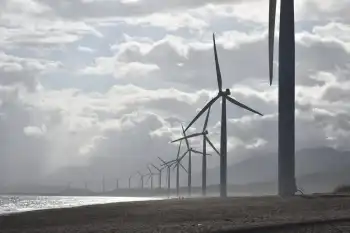Subsea project to bring renewable power from Scotland to England awarded $1.8bn

High Voltage Maintenance Training Online
Our customized live online or in‑person group training can be delivered to your staff at your location.

- Live Online
- 12 hours Instructor-led
- Group Training Available
Eastern Green Link 1 is a 190km HVDC subsea electricity superhighway linking Scotland to northern England, delivering renewable energy, boosting grid capacity, and enhancing energy security for National Grid and Scottish Power.
Key Points
A 190km HVDC subsea link sending Scottish renewables to northern England, boosting grid capacity and UK energy security.
✅ 190km HVDC subsea route from East Lothian to County Durham
✅ Cables by Prysmian; converter stations by GE Vernova, Mytilineos
✅ Powers the equivalent of 2 million UK households
One of Britain’s biggest power grid projects has awarded contracts worth £1.8bn for a 190km subsea electricity superhighway, akin to a hydropower line to New York in scale, to bring renewable power from Scotland to the north of England.
National Grid and Scottish Power, following a recent 2GW substation commissioning, plan to begin building the “transformative” £2.5bn high-voltage power line along the east coast of the country from East Lothian to County Durham from 2025.
The Eastern Green Link 1 (EGL1) project is one of Britain’s largest grid upgrade projects in generations and has been designed to carry enough clean electricity to power the equivalent of 2 million households.
The UK is under pressure to deliver a power grid overhaul, including moves to fast-track grid connections nationwide, as it prepares to double its demand for electricity by 2040 as part of a plan to cut the use of gas and other fossil fuels.
The International Energy Agency has forecast that 600,000km of electric lines will need to be either added or upgraded across the UK by the end of the next decade to meet its climate targets, amid a global race to secure supplies of high voltage cabling and other electrical infrastructure components and to explore superconducting cables to cut losses.
The EGL1 project has awarded Prysmian Group, an international cable maker, the contract to deliver nearly 400km of power cable. The contract to supply two HVDC technology converter stations, one at each end of the cable, has been awarded to GE Vernova and Mytilineos.
The upgrades are expected to cost tens of billions of pounds, according to National Grid, which faces plans for an independent system operator overseeing Great Britain’s electricity market. The FTSE 100 energy company has warned that five times as many pylons and underground lines need to be constructed by the end of the decade than in the past 30 years, and four times more undersea cables laid than there are at present.
Britain’s power grid upgrades are also expected to emerge as an important battleground in the general election. The next government will need to balance the strong local opposition to new grid infrastructure across rural areas of the UK against the climate and economic benefits of the work.
Research undertaken by National Grid has found there will be an estimated 400,000 jobs created by 2050 due to the work needed to rewire Britain’s grid, a trend mirrored by recent cross-border transmission approvals in North America, including about 150,000 jobs anticipated in Scotland and the north of England.
Peter Roper, the project director for EGL1, said the super-cable would be “a transformative project for the UK, enhancing security of supply and helping to connect and transport green power for all customers”.
He added: “These contract announcements are big wins for the supply chain and another important milestone as we build the new network infrastructure to help the UK meet its net zero and energy security ambitions.











